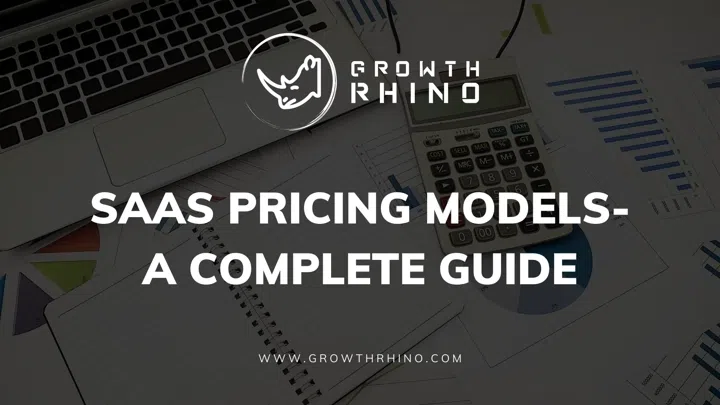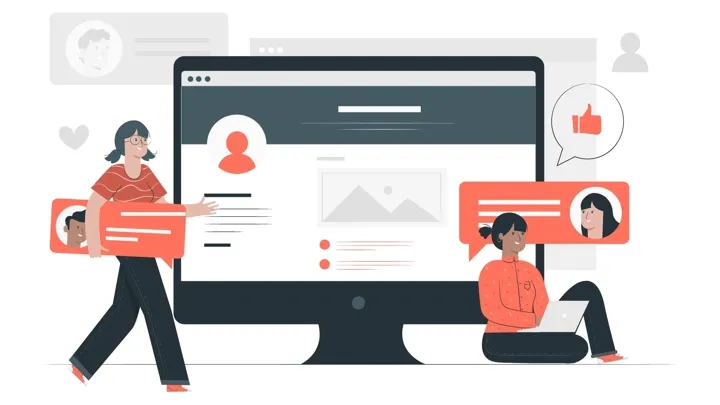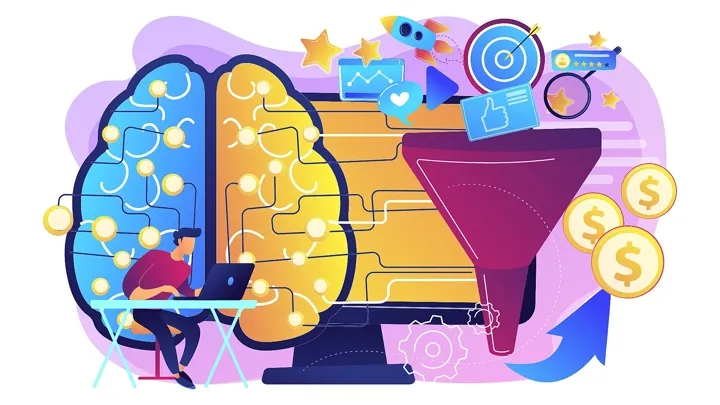
Pricing models for SaaS products and services are distinct from pricing models people have been accustomed to. For SaaS, pricing is usually based on repeated subscriptions of software services, features, plans, etc.
As a software marketer, your task is to know the best SaaS pricing strategy and model applicable to the product you are offering. Using the best pricing model to follow can help you determine the right price to attach each time you have a new product to offer.
The goal is to identify the best price that appeals to your target customers while ensuring profitability with each sale.
What Are SaaS Pricing Models?
Below are software-as-a-service-pricing models with SaaS pricing examples for each category:
Usage-based model:
Also known as the pay-as-you-go model, this pricing format directly bases the cost of a SaaS product on usage.
This is the most applicable model in platforms that charge for bandwidth and API usage. An example is Twilio. It charges users $0.0075 for every text they send.
Per-user model:
This pricing model charges customers based on the number of users. G Suite, for instance, charges customers $6 per user. That is, you pay G Suite $60 if you have ten employees using their software.
Tiered model:
This pricing model is the most commonly used among SaaS companies. Check Slack and HubSpot, for example.
The strategy is to offer a fixed number of features for a specific price and tailor packages for different buyer personas. Customers can simply upgrade to a higher and more expensive tier when they outgrow their current package.
Per-feature model:
Akin to the per-user model, the per-feature model charges customers, depending on the features they avail. It is also similar to the tiered model, where service plans with higher levels of functionality cost more than plans with lower levels of functionality.
Flat-rate model:
This model applies the one-price-one-product-one-set-of-features pricing scheme. The same price applies to all customers, without regard to access or number of users. Basecamp uses such a scheme.
Types of SaaS Pricing Models:
There are two ways SaaS businesses set up software products for customers:
- On-premise: The software is installed locally on a business’s servers and computers.
- Cloud-hosted: Cloud software is hosted by the vendor’s server and accessed by users through an internet browser.
Types of SaaS pricing models for cloud-hosted services include:
- Freemium
- Free Trial
- Subscription-based

1) Freemium:
This model suits SaaS companies that target B2B and B2C customers. In their pure form, freemium plans only offer access to a few features, while a premium offer allows upgrading to a paid subscription where all available features are unlocked.
Vimeo, a video hosting service, uses this model. They offer non-paid users free 2GB storage and up to 200GB for paid subscribers.
2) Free trial:
The free trial pricing model provides users with free and time-limited access without paying an upfront fee. During the free access, the user has time to assess the features of a product.
The disadvantage with this model is that, after users have learned how to use the software, they might find it not valuable enough for their business and look somewhere else for software that works best for their processes.
3) Subscription:
A subscription-based pricing model allows customers to subscribe to a provider’s IT services for some time for a set price. Customers commit to the service and pay an annual or monthly fee for using it.

This pricing model serves to solve two issues:
- It ensures a recurring revenue stream for your company, whether or not your customers are using your product.
- You will still earn revenue even when customers find your product not valuable enough for their business.
How Does SaaS Pricing Strategy Differ from SaaS Pricing Models?
Pricing strategies differ from pricing models. Pricing strategies and pricing models are expressions used interchangeably in marketing communication, but they differ in the meanings they imply.
A pricing strategy is a method to decide the right price to charge users for using a service. The right price is the price that customers are willing to pay but should also be the one that allows a business to maximize its profit.
On the other hand, a pricing model is a framework for pricing rather than just a method for determining the right price.
As a pricing framework, a pricing model provides the structure for how, when, and how much to charge customers. It is part of the way businesses package and present services.
Thus, a pricing strategy determines the best price to charge customers, while a pricing model specifies how pricing is implemented.
In general, pricing strategies are internal to a business, while pricing models are external and directly aimed at customers.
Importance of SaaS Pricing Strategy:
Developing and using a pricing strategy is important for your SaaS business. The goal is to determine the best price or right price every time you have a new product to offer.

If your product is priced incorrectly, you will make your customers feel disappointed and drive potential revenue away from your business.
Be objective when determining the right price for your software and make sure to:
- Record expenses and other items that affect your business’s income and bottom line.
- Present a convincing argument to stakeholders that the price you have set is the right price. There is always pressure coming from the higher-ups.
- Avoid adopting the same strategy and pricing models used for current offerings. A unique product may require a different pricing model.
Best SaaS Pricing Strategies that Always Work:
Below are effective strategies you can use in pricing your SaaS product:
1) Penetration pricing:
Businesses use this pricing strategy to capture a significant portion of the market early on. The trick is to set the price of a product artificially low for a certain period of time and increase it later.
Once you already have many customers buying your product, you can change its price.
2) Economy pricing:
The strategy for economy pricing is to minimize costs for marketing and promotion and offer cheaper options to customers.
Budget airlines, for example, offer passengers relatively lower prices to fill an aircraft.
For the same purpose, supermarkets, on the other hand, put on shelves economy brands for soups, shampoos, spaghetti, and other items.
3) Product line pricing:
A business that offers a wide range of services or products can use this strategy. The trick is to emphasize the benefits of each service. For instance, a car wash business offers basic wash for $3, a wash and wax for $6, and the entire package for $9.
4) Value pricing:
The idea is to make your customers think they are getting a higher value in exchange for their money. McDonald’s uses such a strategy in its value meals.
You can also use a pricing tool to help you determine the most competitive price to apply to your SaaS software. A pricing tool allows you to process competitive data to price products faster and better.
Tips and tricks for SaaS pricing:
Consider the following tips and tricks when deciding the best price to attach to your product and find ways to apply the psychological principles involved in terms of SaaS marketing.
1) The 99 effect:
Research shows that, between two products selling for $1.99 and $2, it is the first product that will sell more. The reason is that, with the use of 99, the left digit in the $1.99 price appears to be lower and, thus, more affordable (1 VS. 2).
Since people read numbers left to right, the perceived price for the first product is $1 instead of $1.99, which is lower than the $2 price of the second product.
2) The round luxury effect:
This principle applies to luxury products. Luxury products are priced without the use of decimals. Instead, they are listed as whole numbers ($40 instead of $38.98).
If you want to position your SaaS software as a luxury product, avoid using decimals in your listing. Decimal points connote discount or inferior quality, and that is not the impression you want to make with a luxury product among your target customers.
3) The compromise effect:
Another pricing strategy that works for many SaaS businesses is the compromise effect.
The strategy involves offering three versions of a product at three different prices. The goal is to attract buyers to choose the middle-priced option as a compromise between the cheapest and most expensive options.
Conclusion:
There are many other SaaS pricing strategies you can read about on the internet, but use the ones that apply best for SaaS and your products.
Remember: Product pricing is a continuous process because the market is not a static entity. Market conditions are changing. Customer needs are changing. Above all, your competitors continuously enhance their products and adjust prices based on many factors.
Regularly assess your pricing strategies and adjust your processes accordingly. Some of the metrics that can guide you in improving your pricing processes include sales, profit, and churn rates.
